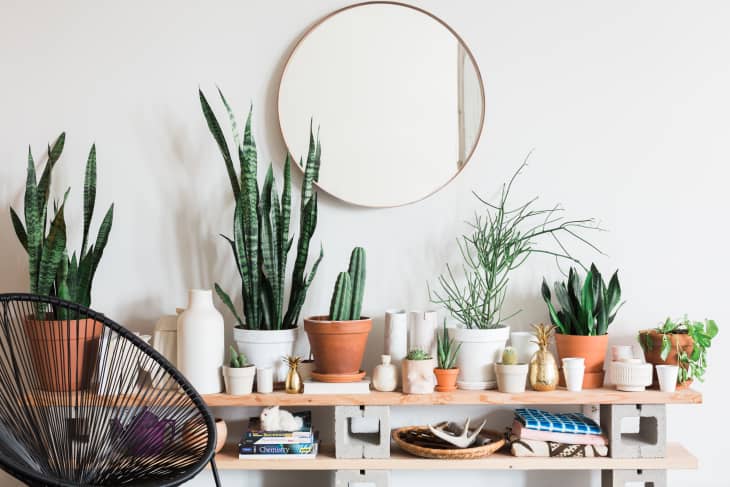Pencil cactus is a plant that adds both architectural interest and soothing greenery to your space. Its pencil-thin stems look like something that would grow on a distant alien planet.
In reality, pencil cactus (Euphorbia tirucalli) is a succulent native to Africa and a member of the spurge family of plants rather than the cactus family, as its name implies. Its stark shoots may be tipped in orange or pink in on new growth, adding to the plant’s visual interest. If you have a room with a lot of bright sun, it’s a relatively easy houseplant to grow and, given a big enough pot, may grow as high as your ceiling.
A word of caution: Pencil cactus, like other euphorbias, has a milky sap (called latex) that can cause rashes and blisters and swelling of the mucous membranes when it comes in contact with the skin. Some people may even develop very severe allergic reactions (think allergic reactions to bee stings). You should always wear gloves when pruning or handling the plant and definitely think twice about growing it if you have pets or small children.
How to Grow Pencil Cactus
Plant your pencil cactus in an unglazed terra cotta pot with drainage holes. Use a sandy potting mix designed for cacti and succulents. Pencil cactus doesn’t like sitting around in moist soil, so the unglazed porous clay will allow excess water to easily evaporate.
Water
Succulents store water in their fleshy stems and leaves, so you usually don’t need to water them as often as you would other houseplants. Water about once every two to three weeks during spring and summer but stop watering completely during the winter months.

Light
Bright sunlight is extremely important for growing pencil cacti. Keep it near a south-facing window and try to keep it as warm as possible. Pencil cactus is native to Africa and prefers temperatures above 65 degrees Fahrenheit all year round. You can move the plant outdoors, or to a screened in patio in the summer if you like.
Fertilization
Feed your pencil cactus liquid fertilizer once per year in the spring. Pencil cactus is adapted to survive in nutritionally poor soil and too much fertilizer can kill it.
Hải Yến
Gió bạn với cây tự buổi nào ,
Gió về cây lại ngất ngư chao .
Gió đi cây sẽ im lìm đứng,
Như kẻ lỡ làng dạ khát khao .
Hải Yến
Gió bạn với cây tự buổi nào , Gió về cây lại ngất ngư chao . Gió đi cây sẽ im lìm đứng, Như kẻ lỡ làng dạ khát khao .



